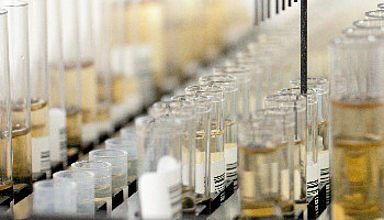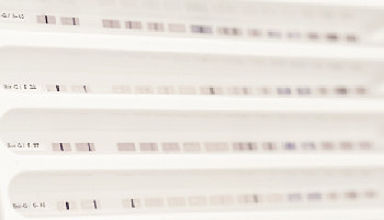Con la detección basada en ARN, el ARN se convierte primero en ADN complementario (ADNc) mediante transcripción inversa. Con la detección basada en el ADN, este paso no es necesario. Cada kit de prueba EURORealTime contiene todos los reactivos PCR listos para su uso, incluida la transcriptasa inversa y/o la ADN polimerasa y los cebadores y sondas específicos validados. De este modo, el pipeteo se reduce al mínimo: simplemente se pipetean juntos los reactivos PCR listos para su uso y, a continuación, se añade el ADN/ARN.
Las secuencias características de ADN/ADNc pertinentes se amplifican por millones mediante la reacción en cadena de la polimerasa (PCR). Dos moléculas de ADN iniciadoras (cebadores) definirán la secuencia que debe replicarse. Si la muestra del paciente contiene la secuencia de ADN correspondiente (secuencia diana), los cebadores se unen a ella y se replica dicha secuencia. Esta reacción se repite múltiples veces, de modo que la secuencia de ADN entre los cebadores se amplifica considerablemente (exponencialmente). Durante cada ciclo de PCR, las sondas de ADN específicas con indicadores fluorescentes también se unen a la secuencia diana. Estos solo generan una señal fluorescente cuando el ADN ha sido amplificado. Al final de un ciclo de PCR, se mide la intensidad de la señal fluorescente para que se pueda continuar con la amplificación del ADN en tiempo real. Si las secuencias diana no están presentes en la muestra del paciente, los cebadores y las sondas no podrán unirse a ellas, el ADN no se amplificará y la señal fluorescente no aumentará. Al incluir los estándares de cuantificación correspondientes, este método también permite cuantificar el ADN de la muestra original. Asimismo, se pueden detectar diferentes secuencias de ADN en una reacción utilizando varios colorantes de fluorescencia con diferentes longitudes de onda de excitación y emisión.


























![[Translate to Spanish:] Dried Blood Spots (DBS) [Translate to Spanish:] Dried Blood Spots (DBS)](/fileadmin/_processed_/4/8/csm_Techniques_overview_dbs_f0564b4956.jpg)